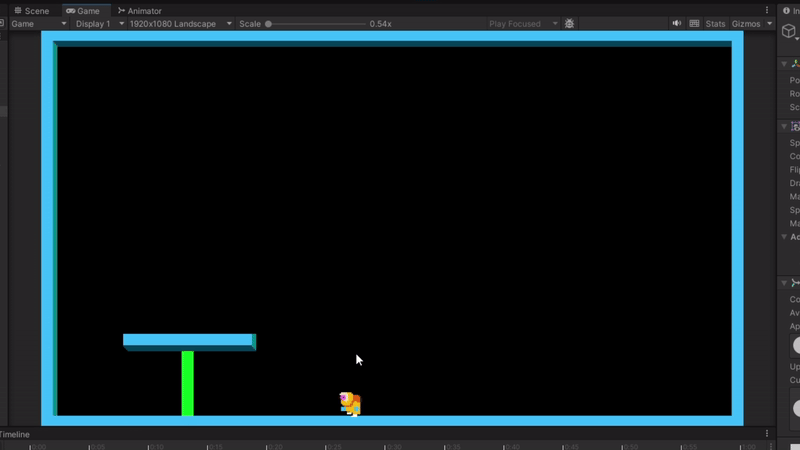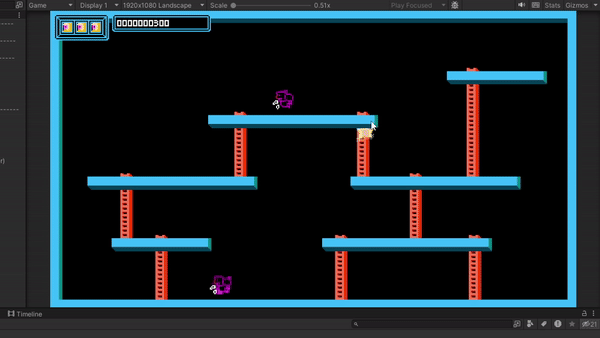top of page
Alarming Ladder Internship
Unity (C#) Programmer Intern
This project was part of indie game studio Alarming Ladder's (now Pinfall Games) "Learning Ladders" summer internship programme over the course of July 2024. My month-long brief was to work on a mobile arcade game, accompanied by a programming documentation.
Context
In July 2024, I took part in Alarming Ladder's (now Pinfall Games!) Learning Ladders summer internship programme, where aspiring game developers and game development students spend a month to work on a client's brief.
You can find out more about the programme here:
https://www.pinfallgames.com/learning-ladders
My brief for this month-long project was to produce a simple arcade game prototype, built for Android and IOS mobile devices. The game will need to take input from touch controls and its UI needs to be scaled fittingly. Additionally, I needed to provide my client with a Game Design Document (GDD) and a comprehensive programming documentation.
At the end of the programme, I was awarded a certificate and a unique special accommodation award for my driven attitude, and high-quality final product.
Devlog

I then added simple sprite animation, and limited the player character to horizontal movement. Inspired by classic arcade games like Donkey Kong (1981) and Bubble Bobble (1986), I created ladder movement by adding a force when the player character swipes upwards/downwards in-range of a ladder. My most challenging obstacle was working a two-way ladder, with a platform that the player character can stand on and also pass through. I tried disabling and enabling the platform collider, but not only did this work half of the time, but it would prove ineffective when having to pair each ladder to its platform. I then
while climbing, that it would bypass collisions both upwards and downwards.

At the same time I was working on this project, I was also playing Alan Wake Remastered (2010), and I absolutely loved the satisfaction from performing a successful dodge. I therefore wanted to add a dodging feature with the same slow-motion effect, additionally with a satisfying camera zoom, for when the player finds themselves hurtling towards a possible impending doom - this gives the player character better control and reduces player frustration.
Initially, I was quite unfamiliar with mobile development, however after setting up Unity Remote, I really wanted to explore swipe detection as input for player character movement. Considering the scope and time frame for this project, I used the iTween plugin to set a player character direction, while adding a constant forward force.

After having a few friends playtest the current controls, most noted that the movement felt too slow. As part of the game, the player character needs to pay attention in order to avoid obstacles - so simply increasing the player character speed would pose opposite problems. Instead, I implemented a roll ability which acts as a dash! This way, the player has better control of their character's speed.

I then added the obstacles which the player must destroy to win, by holding their finger down on them until they pop into a random fruit - very much inspired by classic arcade games!
Document
Conclusion
Towards the end of the programme, the team and I received completion certificates and had our work displayed at a showcase event hosted by Mark Backler at the University of Suffolk's waterfront building. The full showcase presentation can be seen here.

" Matthew worked at an unbelievably high standard throughout the production of his prototyped project for us. Tasked with making an arcade mini-game Matthew worked with us to complete a prototype of a high standard for our client. The delivered project was attached with an incredibly detailed development document making it easy for our client to understand and make changes where needed from the prototype. The energy Matthew also brought to the team was well regarded helping deliver a positive workplace environment. "
Dan Wiltshire, Game Producer @ Pinfall Games

bottom of page






